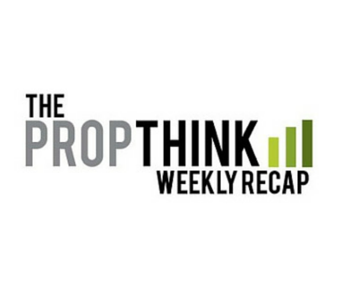Despite this asset class having just entered human testing, there’s significant excitement surrounding the therapeutic potential of blocking CD47 and the “DO NOT EAT” signal in the oncology research community. Stanford University is currently leading the class, with a phase 1 study of its anti-CD47 monoclonal antibody having just begun in a myriad of cancer indications. Celgene plans to bring its own anti-CD47 into the clinic next year; we find it particularly interesting that Celgene’s last two quarterly conference calls have included commentary on the CD47 class though its own candidate has yet to even leave the pre-clinic: clearly there’s already investor interest.
But the $75 million Trillium Therapeutics (SCTPF) (TR.TO) isn’t far behind – and is the only publicly traded pureplay on the anti-CD47 approach. Mr. Fink outlined this week what makes targeting CD47 so interesting and explained that preclinical results suggest Trillium’s SIRPαFc antibody-like fusion proteins may have a leg up on the competition. Off-target effects and unexpected toxicities are question number one for the anti-CD47 molecules, and hematological toxicity of particular concern. Learn more by reading our latest [free], Being Early on an Early Asset: Trillium May be A Diamond in the Rough Immunotherapy Stock.
This Monday was chock full of events. First, Sarepta Therapeutics (SRPT) announced regulatory updates concerning Eteplirsen, the company’s lead drug candidate for Duchenne Muscular Dystrophy, that have set the company back significantly from its most recent guidance. Sarepta previously planned to file a New Drug Application by the end of 2014, but due to additional data will require for the filing package, Sarepta is now guiding for a mid-2015 filing. This puts Sarepta meaningfully behind competitor Prosensa Therapeutics (RNA). The FDA is requiring independent assessment of dystrophin images and 168-week clinical data from the on-going phase IIb extension Study (202) to be included in the data package. In addition, the FDA wants minimum duration of safety in new patients exposed to Eteplirsen (3 months) and patient-level natural history data, to be obtained by Sarepta from independent academic institutions. Most importantly, perhaps, the FDA has “uncovered marked disparities in the immunohistochemistry methodology and concerns about the reproducibility of the [dsytrophin] data.” FDA is the latest and most concerning entity to join the chorus of investors calling existing dystrophin data, and the company’s approach to measuring dystrophin, into question. Without a doubt, Sarepta’s ability to provide valid and positive dystrophin data from subjects treated with Eteplirsen, up to the FDA standard’s, remains a risk to the story. Read the rest of the article.
Pfizer (PFE) will discontinue development of Remoxy (Extended-Release oxycodone) and will return all rights to Pain Therapeutics (PTIE), the company said on Monday. Pain Therapeutics had the rights to Remoxy under a license from DURECT Corp (DRRX), whose stock dropped 40% in the Monday session. Pfizer recently wrapped up an internal review of five recently completed clinical studies that were required to address the Complete Response Letter, received in June 2011 from the FDA. This program included bioequivalence studies to compare the current Remoxy formulation to an older formulation, as well as to test the drug’s abuse-deterrent capabilities.
With Pfizer handing back the Remoxy rights shortly after completing final steps in the development program, the readthrough is that Remoxy has real issues: it’s a question of approvability, not market dynamics. Investors had previously been focused on whether Remoxy, as an aging oxycodone product, still had commercial viability. Now, the question is whether it’s an approvable drug. The focus for DURECT with Remoxy out of the picture is POSIDUR, the company’s phase 3-ready SABER-bupivicaine. Read the full article on DRRX, PFE, Remoxy, and PTIE by clicking here.
Synergy Pharmaceuticals (SGYP) cleared out a major overhang on Wednesday with the announcement that the company would sell $175 million in Convertible Senior Notes. The company followed up with news that a $25 million over-allotment option had been exercised in full, bringing gross proceeds from the offering to $200 million (prior to expenses). Synergy is in the midst of a large phase 3 development program for plecanatide, the company’s candidate for the treatment of Chronic Constipation and Irritable Bowel Syndrome with Constipation. The $200 million deal should get the company through a potential FDA approval. The risk of a financing has acted as an overhang for SGYP for most of 2014, with the stock underperforming meaningfully as investors waited on the sidelines for the company to replenish the coffers. Evidenced by the stock’s 25% gain this week, this deal clearly removed an overhang for the stock. Keep reading at PropThink.com.



